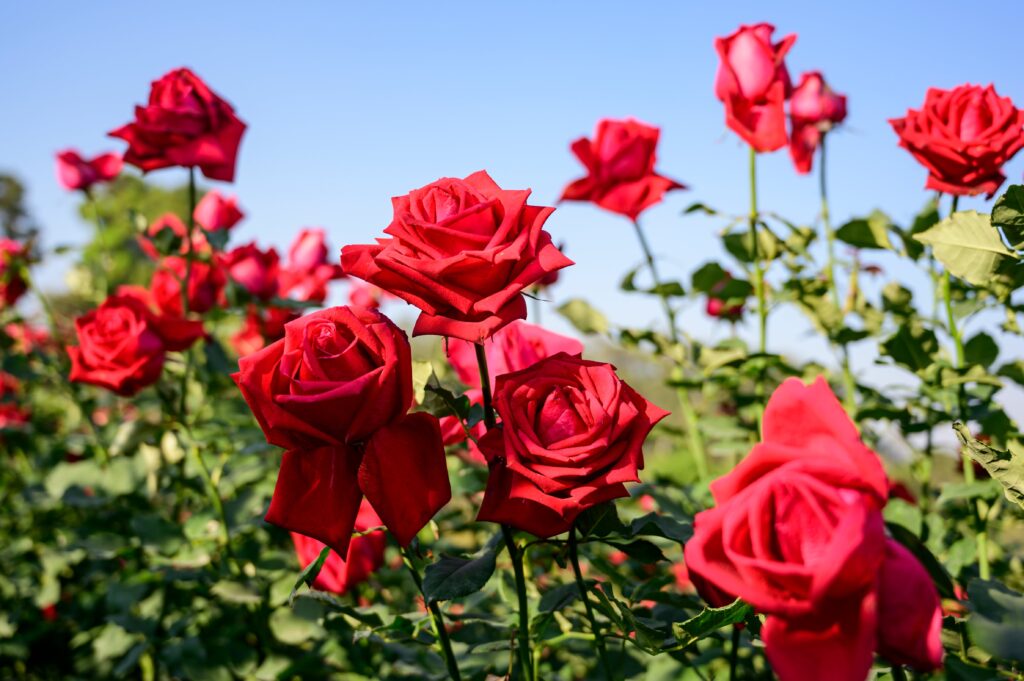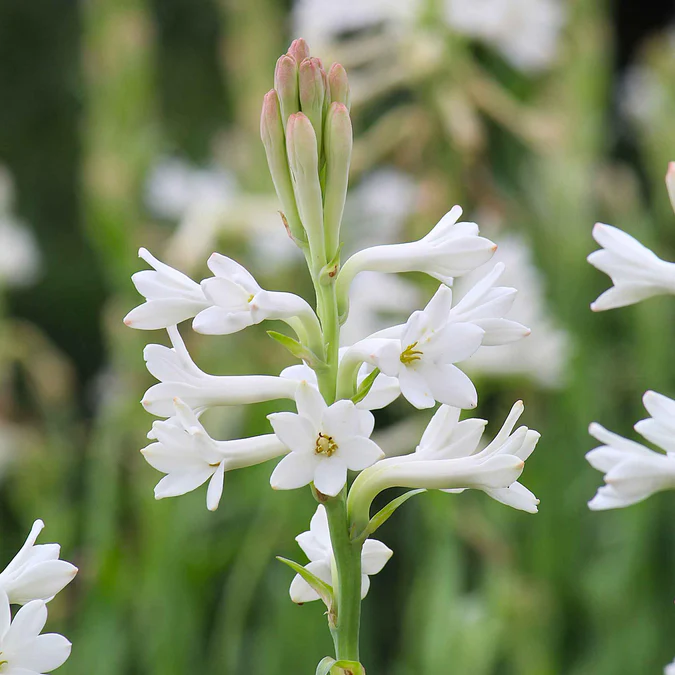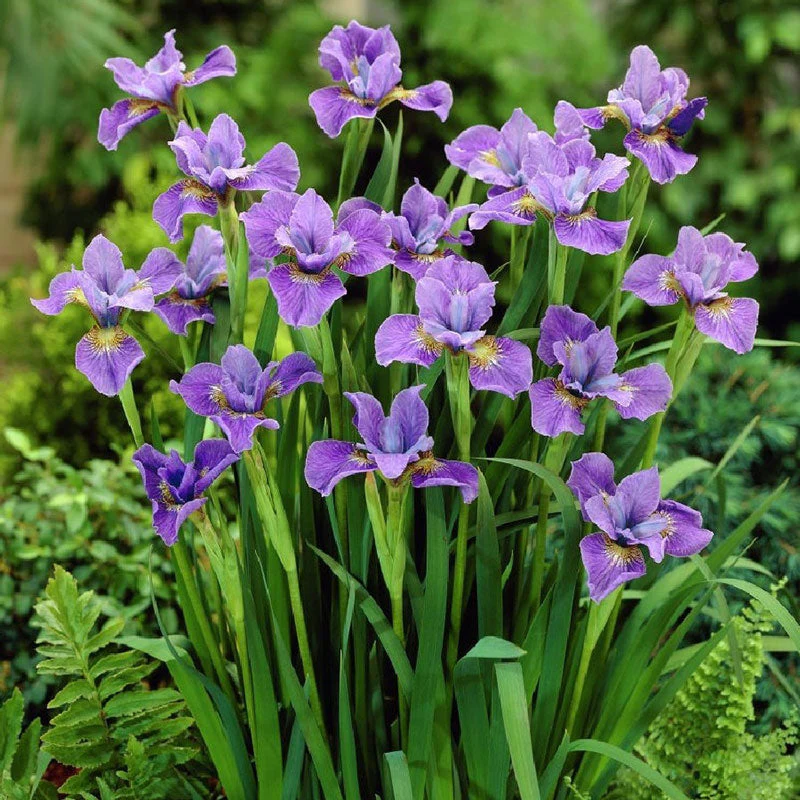Flowers used in perfumes and their essential oils
Introduction:
Flowers have long been a cornerstone of perfumery, celebrated for their evocative scents and ability to transport the wearer to lush gardens, romantic evenings, or nostalgic memories. Their essential oils, extracted through meticulous processes, serve as the heart and soul of many iconic fragrances. Let us delve into the world of flowers in perfumery and explore how their essential oils have enchanted humanity for centuries.
The Art of Extracting Essential Oils
Before examining specific flowers, it is essential to understand how their oils are harvested. The extraction methods play a critical role in preserving the delicate aromatic compounds that give each flower its unique scent.
Steam Distillation: A widely used method, especially for hardy flowers like lavender. This process involves steaming the flowers to release volatile compounds, which are then condensed into oil.
Solvent Extraction: Used for more delicate flowers like jasmine, this method employs solvents to capture aromatic compounds, resulting in a product known as an absolute.
Cold Pressing: Commonly used for citrus peels but also applicable to some flower petals.
Enfleurage: An ancient method, where petals are pressed into animal fat to absorb their fragrance. Though less common today, it was once a primary technique for fragile flowers.
Now, let us explore some of the most cherished flowers in the world of perfumery.
Rose: The Queen of Flowers
The rose, often dubbed the “queen of flowers,” is a symbol of love and beauty. Its essential oil, known as rose otto or rose absolute, is highly prized for its rich, velvety aroma.
Key Species: Rosa damascena (Damask Rose) and Rosa centifolia (Cabbage Rose) are the two most used species in perfumery.
Scent Profile: Sweet, floral, and slightly spicy, with a deep, complex undertone.
Extraction: Rose oil is often steam-distilled, while rose absolute is obtained through solvent extraction.
Uses in Perfume: Rose oil is a staple in both feminine and unisex fragrances, offering a romantic and timeless quality.
Notable Fragrances: Rose-centric perfumes include “Chloé Eau de Parfum” and “Jo Malone Red Roses.”

Jasmine: The Scent of the Night
Jasmine’s intoxicating aroma has made it a favorite among perfumers for centuries. Its essential oil is often referred to as the “king of essential oils.”
Key Species: Jasminum grandiflorum (Spanish Jasmine) and Jasminum sambac (Arabian Jasmine).
Scent Profile: Sweet, exotic, and sensual, with a rich, warm base.
Extraction: Jasmine is typically processed through solvent extraction to produce an absolute, as the flowers are too delicate for steam distillation.
Uses in Perfume: Jasmine adds depth and complexity, often serving as a base or heart note.
Notable Fragrances: Iconic jasmine fragrances include “Dior J’Adore” and “Chanel No. 5.”

Lavender: Calming Elegance
Lavender is celebrated not only for its soothing properties but also for its versatility in perfumery.
Key Species: Lavandula angustifolia (True Lavender).
Scent Profile: Fresh, floral, and slightly herbaceous, with a clean and calming effect.
Extraction: Steam distillation is the primary method for extracting lavender oil.
Uses in Perfume: Lavender is commonly used in fougère compositions and is a key ingredient in unisex and masculine fragrances.
Notable Fragrances: “Yves Saint Laurent Libre” and “Guerlain Jicky” feature lavender prominently.

Tuberose: The Creamy Seductress
Tuberose is a flower of extremes, offering an opulent and heady fragrance that is both seductive and creamy.
Key Species: Polianthes tuberosa.
Scent Profile: Rich, creamy, and narcotic, with hints of honey and spice.
Extraction: Typically solvent extraction to produce an absolute.
Uses in Perfume: Tuberose adds a luxurious touch to floral and oriental fragrances.
Notable Fragrances: “Frédéric Malle Carnal Flower” and “Gucci Bloom”.

Ylang-Ylang: Exotic Allure
Ylang-ylang, known as the “flower of flowers,” hails from tropical regions and exudes a sweet, exotic fragrance.
Key Species: Cananga odorata.
Scent Profile: Sweet, floral, and slightly fruity, with a creamy base.
Extraction: Steam distillation yields different fractions of ylang-ylang oil, from light and floral to rich and deep.
Uses in Perfume: Ylang-ylang is often blended with jasmine or rose to create complex florals.
Notable Fragrances: “Chanel No. 5” and “Tom Ford Black Orchid” feature ylang-ylang.

Neroli: A Citrus Blossom
Neroli, derived from the blossoms of the bitter orange tree, is a bright and uplifting floral note.
Key Species: Citrus aurantium.
Scent Profile: Fresh, green, and slightly bitter, with citrusy undertones.
Extraction: Steam distillation of the flowers.
Uses in Perfume: Neroli is a staple in colognes and light, refreshing fragrances.
Notable Fragrances: “Guerlain Eau de Cologne Impériale” and “Tom Ford Neroli Portofino.”

Orange Blossom: Sweet Sunshine
Closely related to neroli, orange blossom offers a sweeter and more honeyed floral note.
Scent Profile: Sweet, warm, and slightly powdery, with a hint of citrus.
Extraction: Often solvent-extracted to produce an absolute.
Uses in Perfume: Orange blossom lends warmth and depth to floral and oriental compositions.
Notable Fragrances: “Prada Infusion d’Fleur d’Oranger” and “Elie Saab Le Parfum.”

Mimosa: Powdery and Delicate
Mimosa’s soft and powdery fragrance is a hallmark of delicate floral perfumes.
Key Species: Acacia dealbata.
Scent Profile: Sweet, powdery, and slightly green, with a warm, honey-like undertone.
Extraction: Solvent extraction is typically used to produce mimosa absolute.
Uses in Perfume: Mimosa adds a soft, romantic quality to floral compositions.
Notable Fragrances: “Guerlain Champs-Elysées” and “Jo Malone Mimosa & Cardamom.”

Iris: The Noble Flower
Iris, often considered a symbol of royalty, offers a sophisticated and powdery scent.
Key Species: Iris pallida and Iris germanica.
Scent Profile: Powdery, woody, and slightly floral, with earthy undertones.
Extraction: The essential oil, known as orris butter, is extracted from the rhizomes rather than the flowers, a process that takes several years.
Uses in Perfume: Iris is a prized ingredient in high-end perfumes, adding elegance and depth.
Notable Fragrances: “Prada Infusion d’Iris” and “Dior Homme.”

Magnolia: Fresh and Dewy
Magnolia is a symbol of beauty and femininity, and its essential oil captures its fresh and dewy essence.
Key Species: Magnolia grandiflora.
Scent Profile: Light, fresh, and lemony, with a creamy floral base.
Extraction: Steam distillation or solvent extraction.
Uses in Perfume: Magnolia adds brightness and freshness to floral and citrus compositions.
Notable Fragrances: “Versace Bright Crystal” and “Jo Malone Star Magnolia.”

Peony: Soft and Romantic
Peony is celebrated for its soft and romantic fragrance, reminiscent of spring blooms.
Key Species: Paeonia lactiflora.
Scent Profile: Fresh, floral, and slightly rosy, with green and watery nuances.
Extraction: As peonies do not yield essential oil, their scent is often recreated synthetically.
Uses in Perfume: Peony is a popular choice in light, airy florals.
Notable Fragrances: “Chloé Eau de Parfum” and “Dior Miss Dior Blooming Bouquet.”

Lily: Purity and Grace
Lilies symbolize purity and grace, and their fragrance reflects these qualities.
Key Species: Lilium candidum (Madonna Lily).
Scent Profile: Sweet, fresh, and slightly spicy, with a powdery undertone.
Extraction: Lily fragrance is often recreated synthetically, as the flowers do not yield essential oil.
Uses in Perfume: Lily adds a touch of elegance to floral and chypre compositions.
Notable Fragrances: “Cartier Baiser Volé” and “Diorissimo.”

Conclusion
Flowers and their essential oils are the lifeblood of perfumery, offering an unparalleled range of scents and emotions. From the romantic allure of rose to the exotic charm of ylang-ylang, each flower brings its unique character to a fragrance. These natural essences, combined with the artistry of perfumers, create olfactory masterpieces that captivate and inspire. As you explore the world of perfumes, take a moment to appreciate the flowers behind the scents and the centuries of craftsmanship that make them possible.
5 thoughts on “Flowers used in perfumes and their essential oils”
hello!,I like your writing so a lot! proportion we keep up a correspondence extra about your post on AOL? I need an expert in this house to resolve my problem. May be that is you! Having a look ahead to see you.
I was wondering if you ever thought of changing the layout of your website? Its very well written; I love what youve got to say. But maybe you could a little more in the way of content so people could connect with it better. Youve got an awful lot of text for only having one or two pictures. Maybe you could space it out better?
Admiring the hard work you put into your site and detailed information you present. It’s great to come across a blog every once in a while that isn’t the same outdated rehashed material. Excellent read! I’ve saved your site and I’m adding your RSS feeds to my Google account.
Sweet website , super layout, real clean and use genial.
“You’re an adventure I can’t resist exploring. Shall we start at https://rb.gy/44z0k7?Layernag ?”